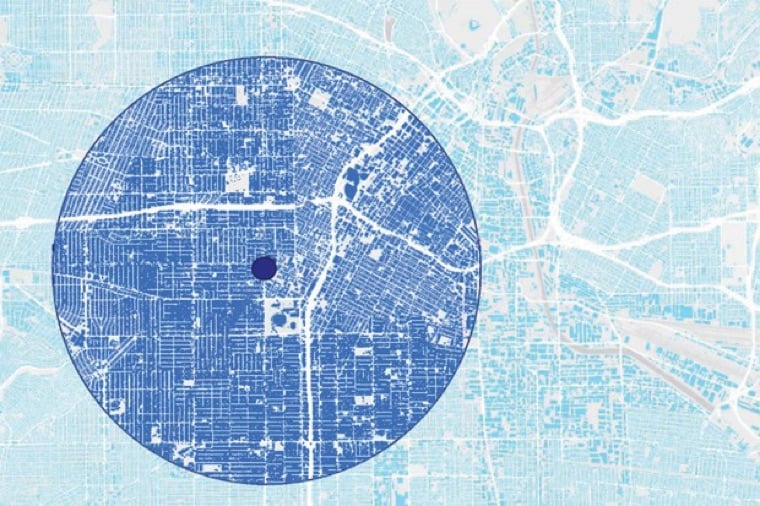Cities flowing like liquids or organized like crystals
File this story at Citylab adjacent to concepts like complexity, scale, and fractals. It turns out—according to this research paper anyway—that cities’ heat islands function differently depending on the “texture” of the city itself.
[S]cientists know that the density of buildings, the absorption of light by those buildings, and the relative lack of vegetation in cities are major contributors to the urban heat island effect. It’s why cities like Chicago are hoping to find relief through green roofs and reflective construction materials, or through planting more trees and banning cars. In a more radical move, Los Angeles even began painting their roads white as part of Mayor Eric Garcetti’s effort to bring down the city’s temperature by just under 2 degrees over the next 20 years. […]
The difference is even starker at night: even as the temperature cools, the release of heat absorbed during the day by asphalt and densely packed buildings can make the downtown area some 20 degrees warmer in some cities.

Roland Pellenq, a senior research scientist at MIT’s Concrete Sustainability Hub, looked at city grids and the relative positions of buildings, to see if patterns emerge.
Indeed, the fingerprints of cities like Boston and Los Angeles mirror the disorderly atomic structure of liquids and glass, while the likes of Chicago and New York City, with their streets and avenues perpendicular to one another, exhibit a more orderly configuration found in crystals.
Using formulas borrowed from physics, originally developed to measure atomic interaction in condensed materials, they found that more tightly packed cities have more intense heat island effects but also:
[T]hat cities with more rigid grid-like street patterns (that is, a higher local order) tended to display a higher temperature difference between their urban and rural areas. This has to do with air flow, said Pellenq. In disorganized cities, the air tends to flow uniformly with little or no interruption. But the perpendicular streets of Chicago and the like often trap heat by disrupting that airflow.
Fascinating.





Stay Connected